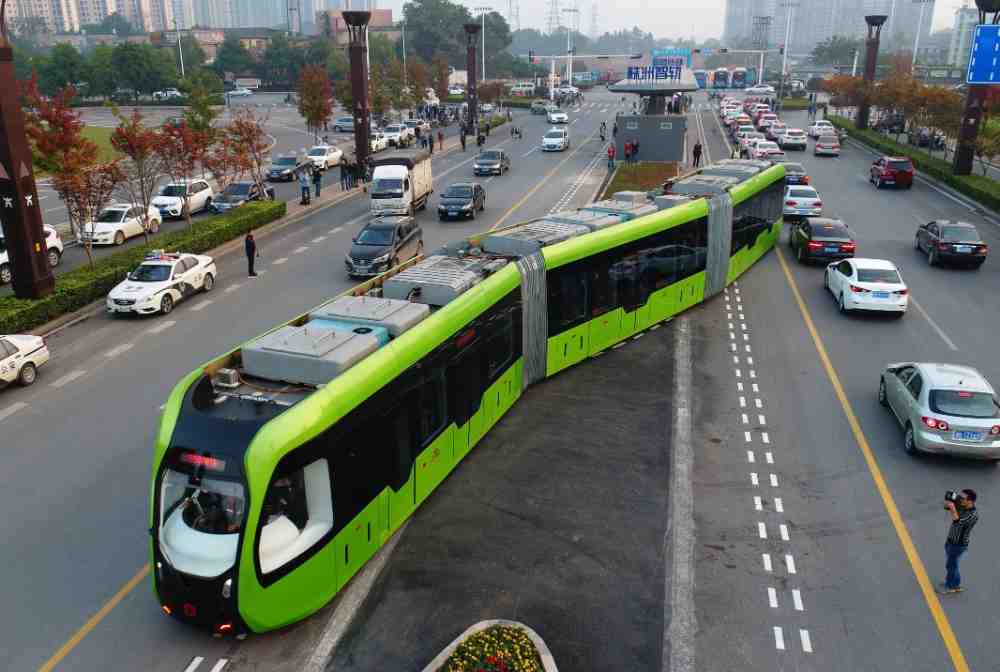China’s steadfast commitment to enhancing its public transportation infrastructure is exemplified by its investments in High-Speed Railway (HSR), subway, and Bus Rapid Transit (BRT) systems. Beyond these advancements, the country has also ventured into the realm of public transport innovation, notably with the introduction of the trackless tram, also referred to as Autonomous Rail Transit (ART). This novel approach garnered global attention when unveiled by the China Railway Rolling Stock Corporation (CRRC) in 2017.
Blending Tradition with Innovation

The trackless tram seamlessly merges the strengths of traditional light rail systems with the benefits of buses, providing a unique solution to urban transit challenges. Conventional light rail systems are hindered by their operational rigidity and substantial investment requirements for rail and catenary infrastructure. In contrast, the trackless tram operates on regular asphalt roads using rubber tires, eliminating the need for dedicated rail tracks. Despite this, these innovative trams still offer considerable capacity, accommodating anywhere from 300 to a remarkable 500 passengers.
Inception and Deployment
The trackless tram concept underwent testing in 2017, followed by its commercial debut in 2019 in the southern Chinese cities of Zhuzhou and Yibin. The vehicle’s design features three sections, each with a passenger capacity of 100. Notably, the bi-directional nature of the articulated tram, equipped with driver cabins at both ends, enhances operational flexibility and maneuverability.

While not a revolutionary disruption in the transportation sector, trackless trams represent an intriguing and practical alternative for cities seeking high-capacity transit systems without the heavy resource mobilization and public support required for traditional tram systems. The unique selling point of trackless trams is their ability to provide tram-like capacity without necessitating the elaborate infrastructure investment associated with traditional light rail.
Versatility in Urban Planning
These innovative trams have the potential to serve a range of urban transport needs. They can be effectively employed to connect low-density urban areas, bridge the gap between urban and suburban regions, and provide transit solutions in areas where rail construction is unfeasible. As a supplementary option alongside existing tram or BRT networks, trackless trams contribute to the diversity and adaptability of urban transport systems.
